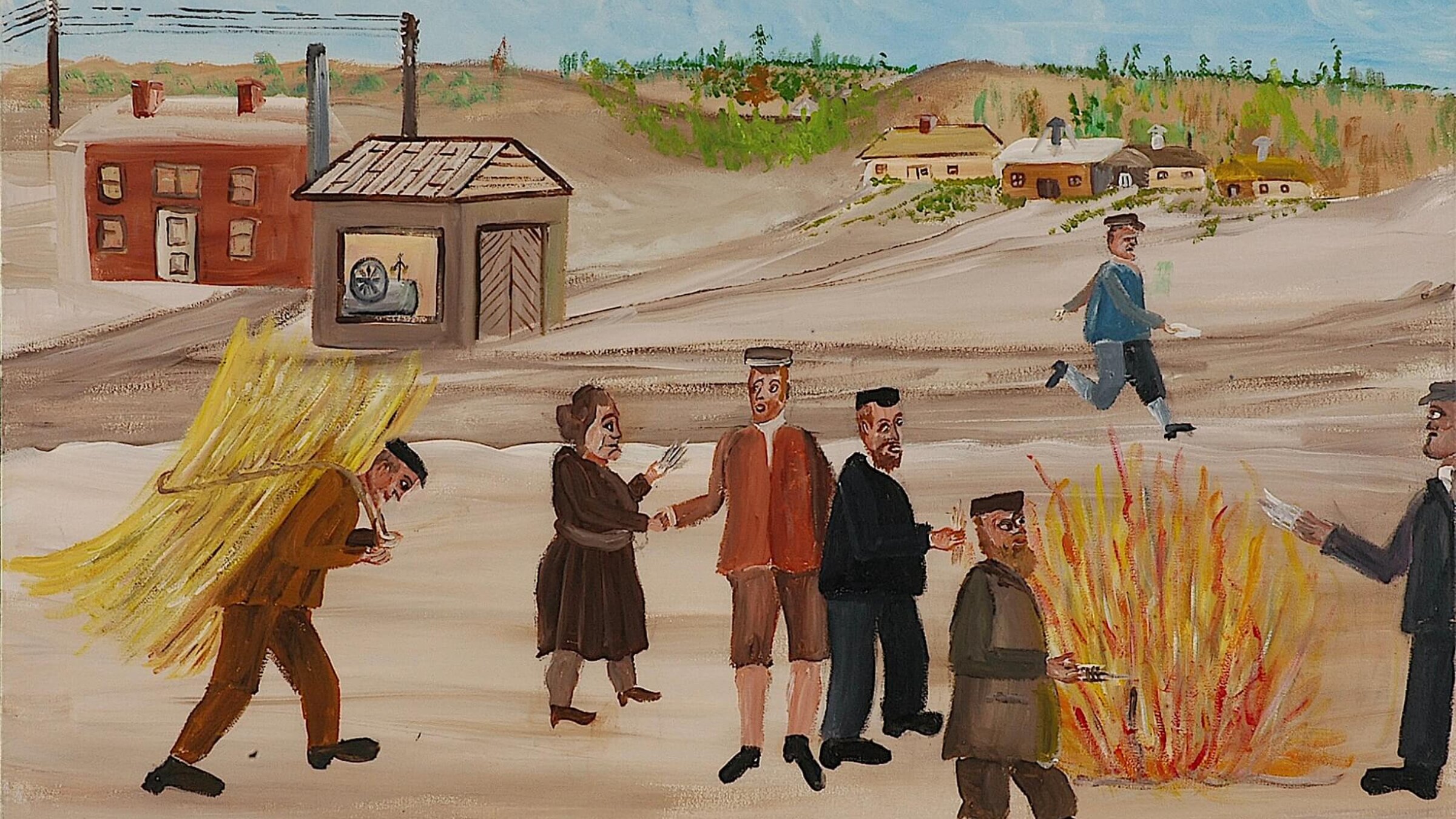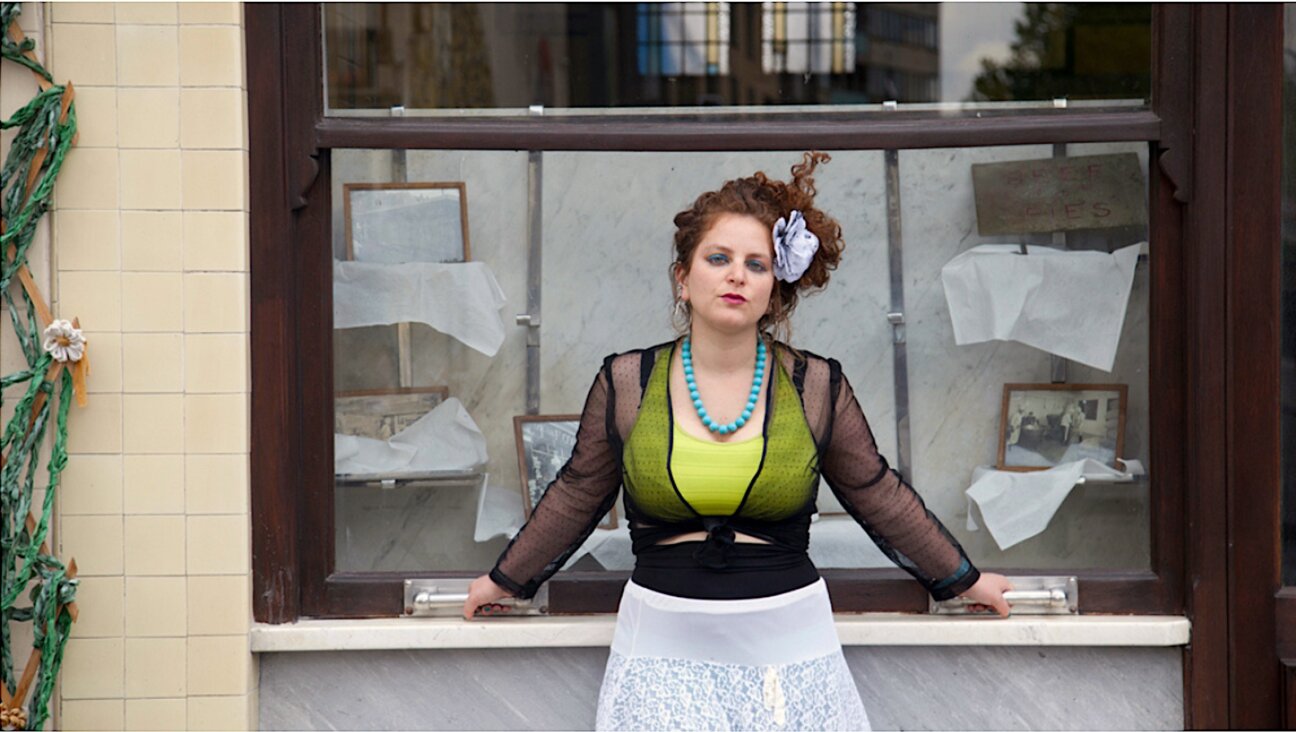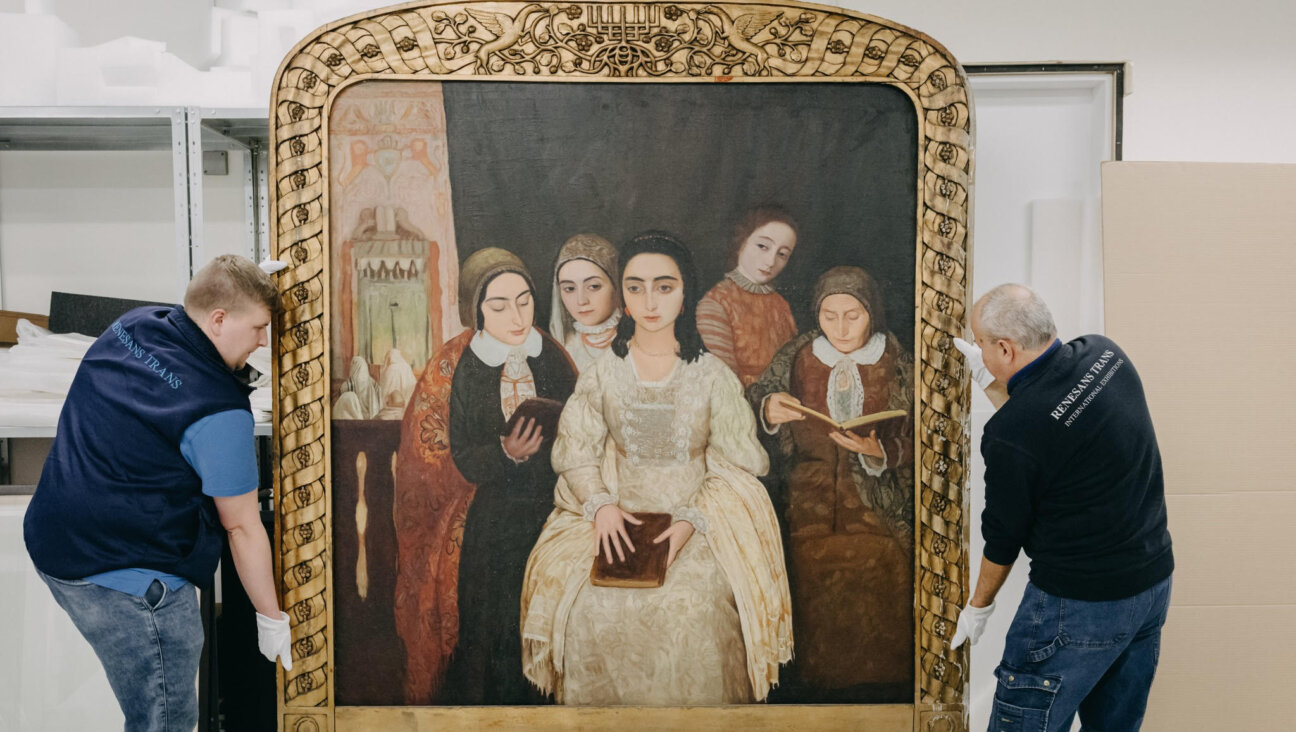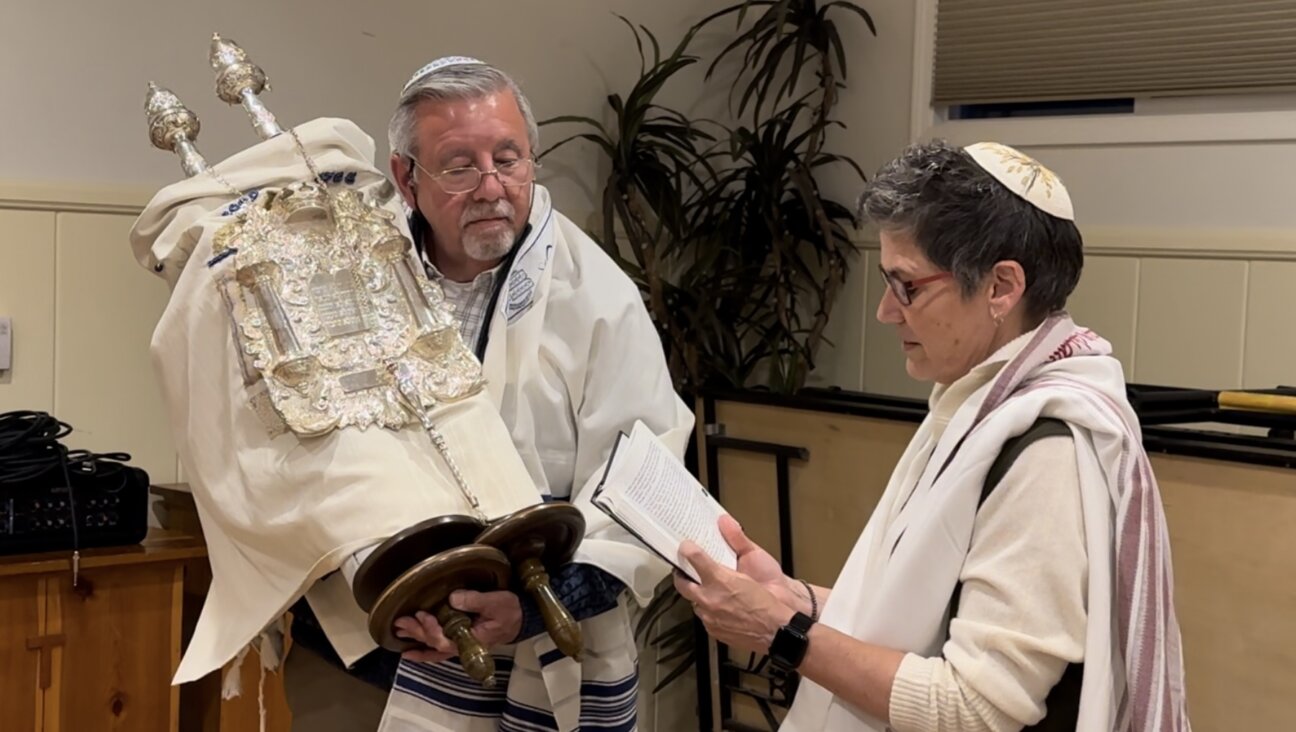What pre-pesach cleaning was like in the shtetl
The late Mayer Kirshenblatt, from Opatow (Apt), recalls his parents replacing the straw in their mattresses.

Graphic by Mayer Kirschenblatt
The intense scrubbing and cleaning of homes to prepare for Passover was a little different in the shtetl.
Mayer Kirshenblatt (1916-2009), who was born and raised in Opatow (Apt), described in delightful detail what pre-Pesach cleaning was like in the town in the 1920s, through his illustrated memoir, “Mayer July: Painted Memories of a Jewish Childhood in Poland before WWII.”
As you’ll read in this excerpt below, he not only writes what his family did to rid the house of khomets (chametz, or leaven), but also explains what he painted in the illustration to the memoir. Read on:
* * *
Just before Passover, we did our spring cleaning. All the furniture was taken out into the yard, and everything was torn apart. All the books were taken out and aired: we let the wind blow through them. The beds had to be cleaned scrupulously and the straw mattresses emptied. We poured boiling hot water into all the seams and joints in the bedsteads to kill the bedbugs and their eggs. After we got the FLIT, my father would spray everything with FLIT. That helped a lot to keep the bedbugs under control.
The mattresses were made by stuffing straw into a rectangular burlap bag that had a slit up the middle. Every year, before Passover, we emptied the mattresses of the old straw. Most of the time we threw the old straw into the cesspool in the back of our house. By Passover, it would have deteriorated and lost its spring, so most people took their old straw to the bonfire where we burned khumets (chametz) or leaven, just before Passover started. We would refill the mattresses with fresh straw that we bought from the farmers, who knew to bring straw to market just before Passover.
Spring cleaning included a search for any trace of leaven. Leaven is prohibited during Passover, the holiday that commemorates the exodus of the Jews from Egypt. The Jews left in such haste that their bread did not have time to rise. This is why, during Passover, we are prohibited from eating leaven.
We would use a goose wing, with the feathers still attached, as a duster for sweeping the leaven into a cloth. To destroy the leaven, we used to go to an empty place on a back street, on the south side of town. A man tended a big fire for just this purpose. You had to pay him a small fee for throwing your khumets (chametz, or leaven) into the fire.
To get out of paying this fee, one guy would divert his attention, while another guy threw the khumets into the fire when he wasn’t looking. If the man noticed, he would rush over to the fire, grab the piece of khumets, and throw it back at the guy.
In this painting, you can see a man bringing his old bed straw to be burnt and several people paying for their khumets to be burnt. A boy is trying to sneak his khumets into the fire without paying. You can also see the electricity plant for the town and the steam boiler inside it. Electricity came to Apt around 1928.
















